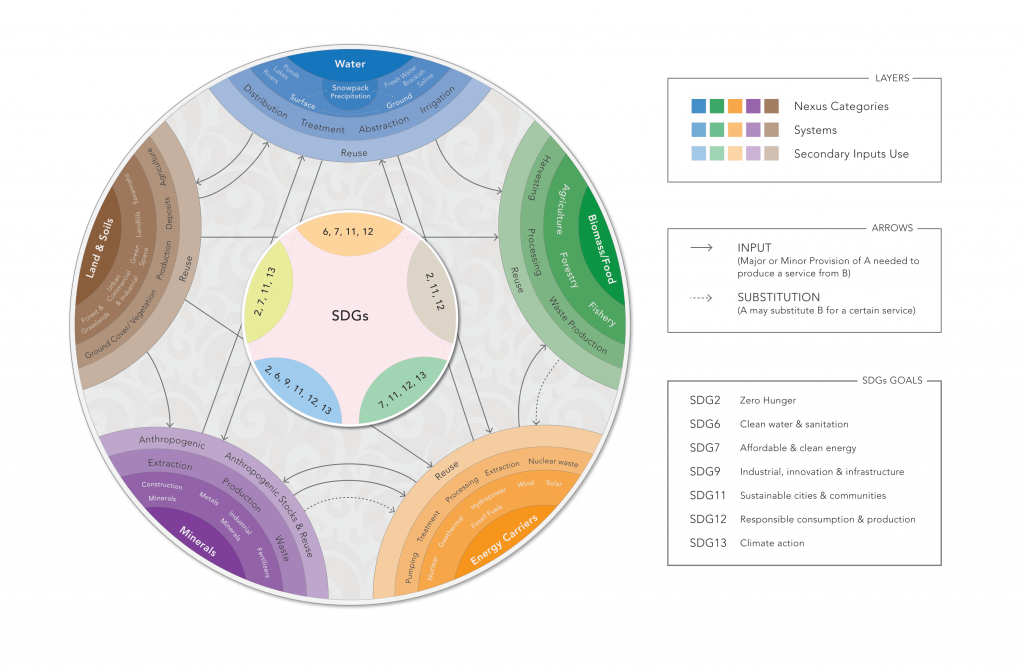Natural Resource Nexuses in the ECE region
The pressure on natural resources continues to increase
Increasing demand, changing climates and technologies, urbanisation, growing populations, societal demand and inequalities, globalisation and other megatrends are putting enormous pressure on natural resources, most of which are not renewable.
- Population growth and urbanisation: 9 billion people are expected by 2050 and 2/3 of the global population is projected to be living in urban areas.
- Natural resources: Use of material resources has increased more than 10 times since 1900 and is set to double again by 2030.
- Economic growth: Economic output is expected to triple by 2050.
- Climate: Natural ecosystems and biodiversity, economic growth and global food security and human health are threatened by rapidly increasing climate change.
- Environmental pollution: Atmospheric, aquatic and soil pollution will continue to increase.
- Future pandemics: May have significant impacts on socio-economic and environmental activities.
Calling for integrated and sustainable natural resource use
Taking a nexus approach provides opportunities to identify and promote integrated planning, management, and governance of natural resources. The nexus approach can generate relevant information about critical interlinkages that enable decision-makers to plan for robust governance and management, across resources and spatial scales. The nexus approach should be part of the solution, ensuring more integrated and sustainable perspectives of natural resource use beyond the traditional sectoral silos, at all scales.

Natural Resource Nexus Hotspots showcase major challenges and opportunities in the ECE region
This report focus on presenting seven nexus hotspots in an effort to demonstrate the added value of taking a nexus approach, considering core ECE expertise and products, megatrends, and the SDGs. These nexus hotspots are:
- The Food Loss and Waste Challenge
- Life Cycle of Vehicles
- Land Value Capture
- Natural Resource Use in Transboundary Basins
- Measuring the use of natural resources with the System of Environmental-Economic Accounting
- Forest Landscape Restoration
- Integrated Management of Energy Resources
As part of analysing the above-noted nexus hotspots, the report also presents a process to identify nexus pathways, based largely on experiences with water and energy-related nexus activities that have been carried out in the ECE region. The nexus approach has been left intentionally broad as it can be applied at many levels.